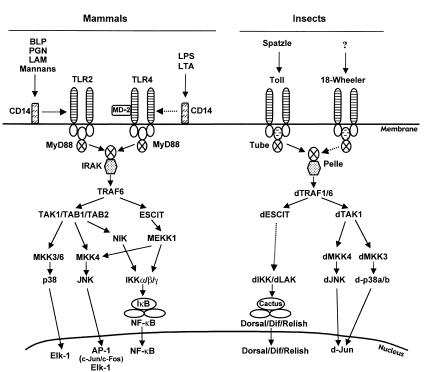Figure 2.
TLR-mediated signaling pathways leading to activation of NF-κB and MAPK. TLR2 is activated in response to BLPs, PGNs of Gram-positive bacteria, LAM of mycobacteria, and mannans of yeasts. TLR4 is activated by LPS of Gram-negative bacteria and LTA of Gram-negative bacteria. A secreted small molecule MD-2 is essential for TLR4 signaling. Whether bacterial products directly bind to TLRs, or whether they bind through CD14, remains to be fully established. In Drosophila, Toll is activated by Spatzle, an endogenous protein generated by a protease cascade during development and fungal infection. A different Toll-like molecule, 18-Wheeler, is activated upon bacterial infection. Whether Spatzle is also a ligand for 18-Wheeler remains to be determined. It is important to note that NF-κB and MAPK can also be activated independently of MyD88, and TLR2 can lead to apoptosis. However, the details of the pathways involved remain to be characterized.

